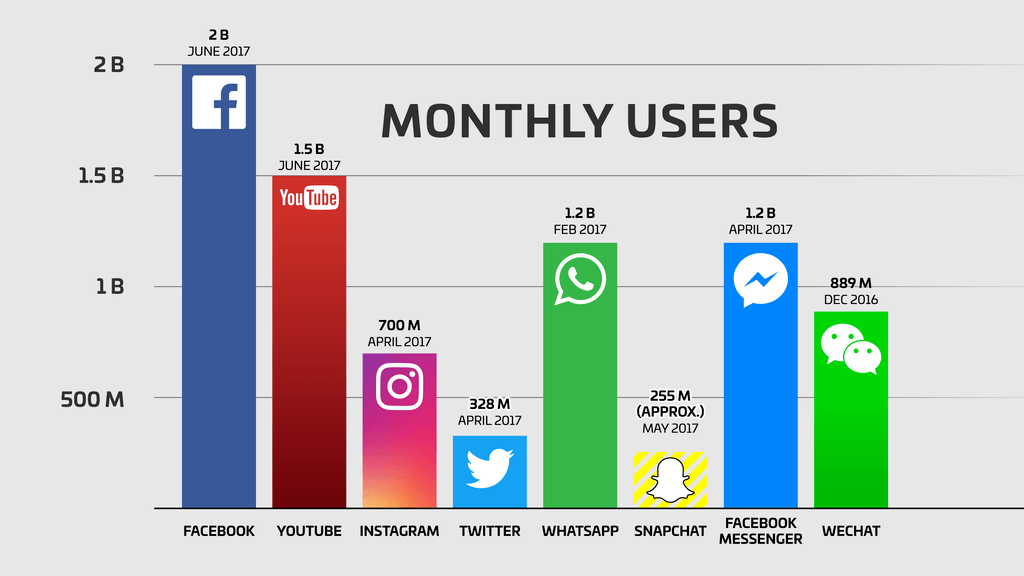Revealing Hidden Facts about Injuries and Claims using Social Media in Combination with Medical Canvassing

There is no denying that using social media has become a regular routine for many people these days, young and old alike. We use it to stay connected with family and friends, talk about events in our lives, places we go, and express interests we have. Social media allows us to effortlessly explore, connect, and share with the world through our mobile phones and computers.
As of June 2017, Facebook is still leading the march with over 2 billion monthly users. YouTube, Facebook Messenger, WhatsApp are also in the 1 billion + monthly user category in 2017.

Source: https://techcrunch.com/2017/06/27/facebook-2-billion-users/
So, what does this have to do with your claims? Good question.
There are several steps you probably take when investigating a claim, and dedicated resources you may use to validate the one in question. As we mentioned in our last post, the use of a Medical Canvass is a valuable tool you should add as a resource. However, implementing a combination of social media aspect along with the Medical Canvass can reveal even more during your investigation.
It’s clear that people will post just about anything on their social media profiles. Many times, they will post about something in the moment and forget about it, or not even consider who will see or read it in the future. One thing most people doesn’t think about in the moment is that anything you post online is now public record and can be found, even if you delete or remove it.
By using these tools to our advantage, we can isolate the timeline of both the incident and location. Surprisingly, there have been instances where we found an employee posting about an injury or trip to the E.R. just days prior to the date of loss. Another example is, the employee posting about some “weekend event” or “activity” that might have resulted in the related injury.
Even if the employee doesn’t post anything of relevance to a claim, that doesn’t exclude that a family member or friend won’t. While the employee may consciously make efforts to avoid exposing the true story online related to the incident, others that witnessed or heard about it may not.
It’s not about looking for “gossip” but gathering intelligence from all resources related to the employee, and determining what is both real and relevant to the claim based on the findings.
There are many scenarios that apply here, however, the point is, people typically use social media in a way that profiles their life experiences, whether they intended to or not.
Food for thought – most Medical Canvassing companies know where to search for records and treatment of services based off geographical locations of residence and work place, however, what about weekend spots locations, hunting cabins, or vacation spots? These are just a few of other location that may be missed unless we look at social media profiles and platforms.
If you plan on implementing Medical Canvassing services when mitigating your claims, make sure it includes a social media search for best results.
